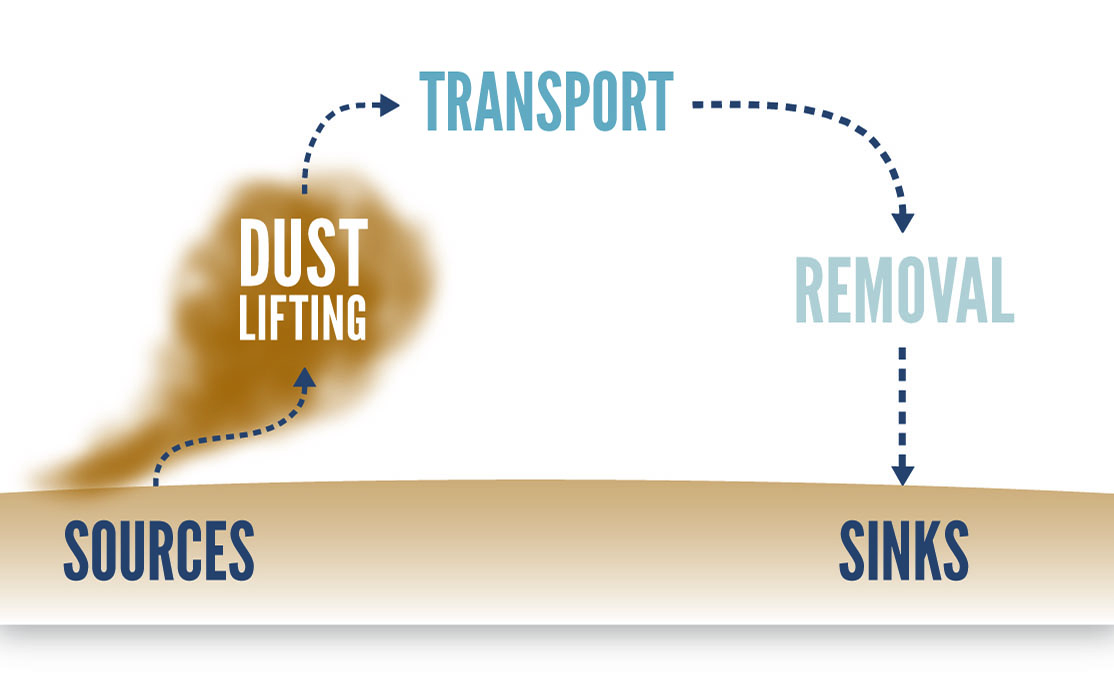Dust Lifting
Atmospheric dust has a significant impact on Mars’ weather and climate. Dust is lifted from the surface to the atmosphere through the exchange of momentum between the surface and the atmosphere. Two processes are thought to be primarily responsible for the majority of dust lifting from the surface of Mars: surface wind stress lifting and dust devil (or convective vortex) lifting. Electrical and thermal processes, CO2 fountaining and meteoritic impacts are some of the other processes that could also lead to the lifting of dust.
Dust lifting due to surface wind stress: Surface wind stress lifting occurs when the momentum imparted by the near-surface wind is higher than the required threshold for sand-sized particles to leave the surface. These larger particles travel a short distance and return to the surface due to saltation and impart secondary momentum to the smaller sized dust particles along with the wind and hence, they are lifted in the atmosphere.
Dust devil lifting: In dust lifting due to convective vortices, pressure gradient effects combine with surface wind stress lifting around the vortex core to inject dust through the boundary layer. Convective vortices are formed in the boundary layer when heating at the surface generates warm air plumes that rise and interact with the cooler air to start an initial rotation process. The rotating core further intensifies due to conservation of angular momentum, once the warm air starts rising vertically. In the vortex core, strong upward motion above the surface produces a pressure drop, which leads to more warm air being drawn to the surface, and hence the vortex becomes self-sustained. After being lofted, dust travels through the outer section of the vortex since there is minimal dust in the core aloft due to centrifugal forces and downdrafts. The dust falls out or gets ejected at the top of the vortex.
Dust Cycle Modeling
The GCM has routines for representing the physics of lifting, transport, and sedimentation of radiatively active dust (Kahre et al., 2006). The airborne dust that interacts with solar and infrared radiation acts as ice nuclei and goes through gravitational sedimentation as free dust and as cores of water ice cloud particles. Surface wind stress lifting schemes typically have two parameters that can be modified to produce more realistic predicted dust cycles: the threshold for lifting and the lifting efficiency. The dust devil lifting schemes, in general, have a lifting efficiency as the single parameter which is held constant during the time of the simulation. The lognormal particle size distributions of dust and cloud are represented by a spatially and temporally varying mass and number, and a constant effective variance. This method takes into account the complex processes of cloud microphysics through cloud and dust particle size evolution and is computationally efficient.
























